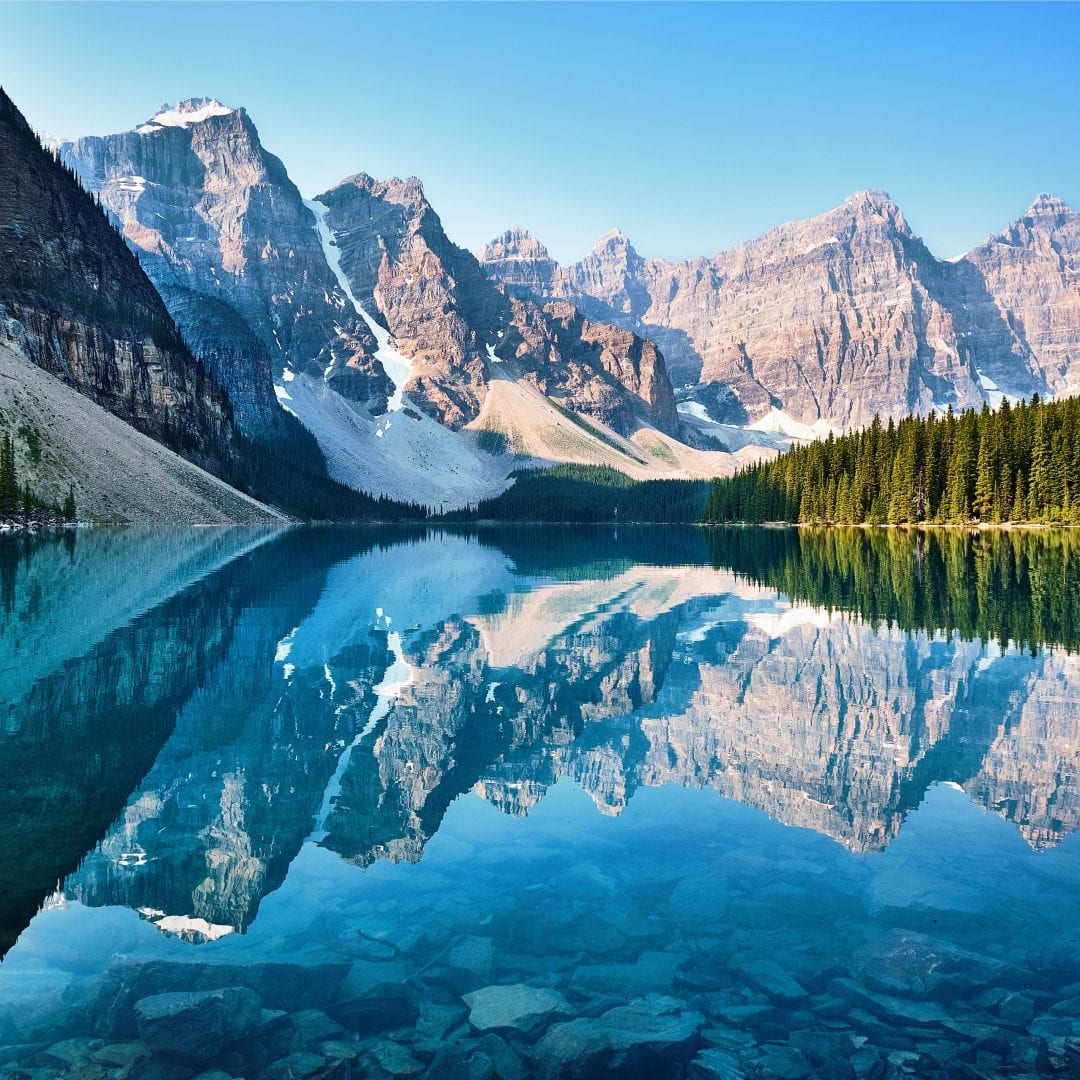Far to the north, in southwestern Alberta, there is a two and half thousand square mile park that is a pristine and fantastic landscape of the Rocky Mountain System. Part of Canada’s parks system, Banff National park, or Parc National Banff in French, is the oldest national park in Canada.
Established in 1885, this fantastic destination west of Calgary encompasses dense forests, alpine terrain, and dozens of ancient glaciers. It was built up due to the Canadian Pacific railway attracting tourists in the latter half of the 19th century. It has continued to be a popular destination in Western Canada and is known to have upwards of 3 1/2 million visitors a year.
So if you’re ever in the neighborhood what are some of the things you need to be sure and do while in this beautiful area of the Canadian wilderness?
Lake Louise and Moraine Lake
Lake Louise was founded in 1890 as a station that offered an outpost to the end of the Canadian Pacific Railway. Today it is home to some of the best skiing, hiking, and sightseeing in the park has to offer. As both lakes are frozen for much of the winter, it is best to plan your trip to the area after late May when the lakes melt and the snow caps pour into them. The best time for alpine hiking starts after the end of June.
Lake Louise is a hamlet and home to the landmark Château Lake Louise which was built in the latter half of the 19th century. It has been declared a world heritage site by UNESCO and was finally winterized in 1982 allowing for year-round visitors. Since then become quite the regular ski resort.
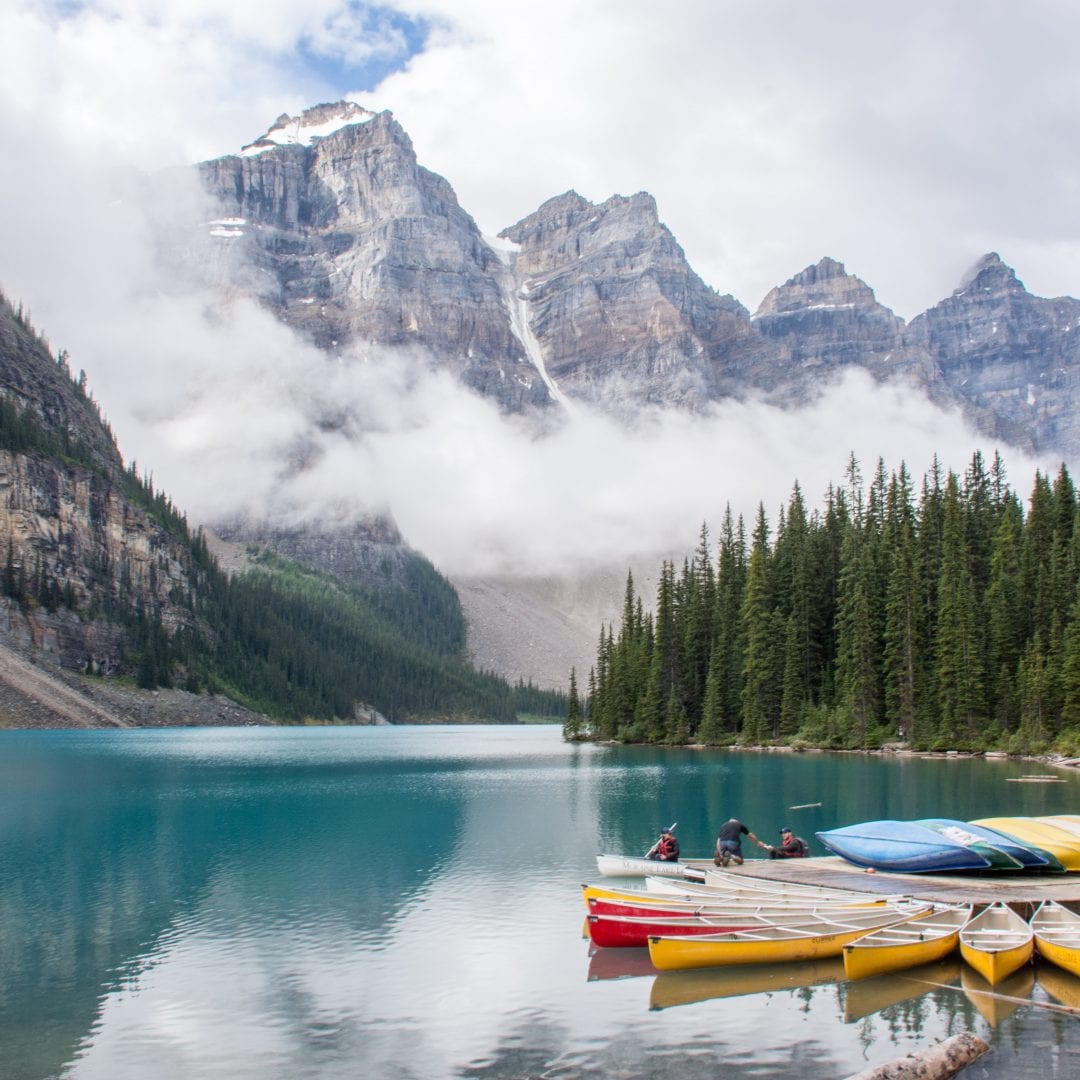
Moraine Lake is a glacially-fed lake that offers beautiful views of the Valley of the Ten Peaks. It has a unique shade of azure blue due to the refraction of light off of what is called rock flour or glacial flour, a fine-grained silt-sized handful of rock particles, that are essentially the dust left in the ice after a glacier eroded its way down a mountain.
Icefields Parkway
Similar to the Sun Road in Glacier National Park, the Icefield Parkway is a 140-mile road connecting Lake Louise to Jasper Alberta. It’s a scenic drive that passes many other lakes including Bow Lake as well as Bow Summit. It is also titled Alberta Highway 93 and it’s a great drive in the summertime to witness the majesty of all the area has to offer.
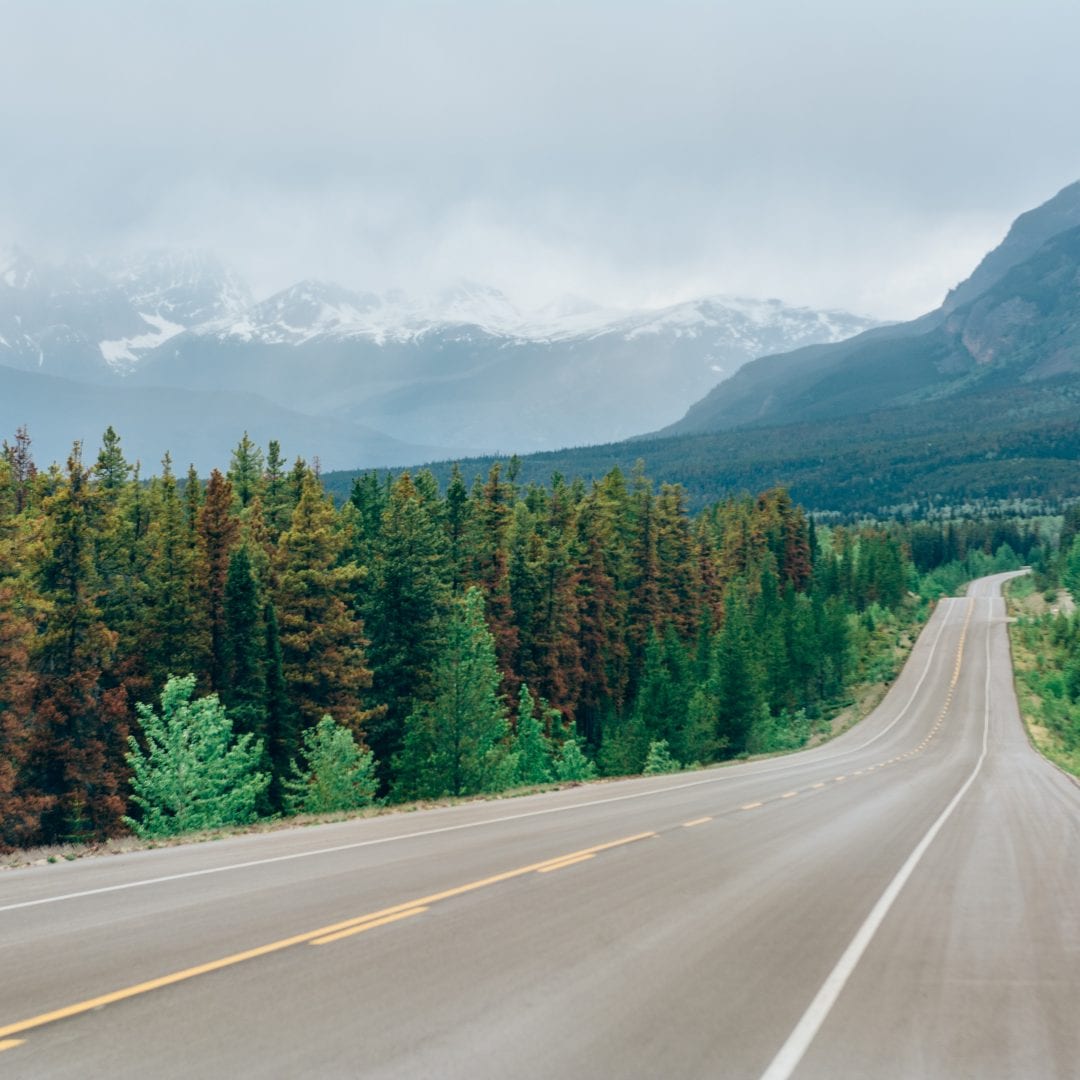
Castle Mountain
One of the most beautiful picturesque peaks in the Canadian Rockies, Castle Mountain, is approximately halfway between the town of Banff and Lake Louise. It was named in 1858 by a man called James Hector who was a Scottish geologist, naturalist, and surgeon accompanying the Palliser expedition. He named it for its castle-like appearance but from 1946 to 1979 it was known as Mount Eisenhower in honor of the American World War II general. But public pressure pushed back and eventually it was given its original name back in the 1980s.
Nearby is Silver city, a 19th-century mining settlement turn to Ghost Town as well as Castle Mountain internment camp which was a concentration camp used to hold people of Slavic and Germanic origins suspected to be enemy sympathizers during the first and second World Wars. The mountain is steeped in history both beautiful and dark and is a fantastic place to take pictures so make sure that this makes it onto your visiting list!
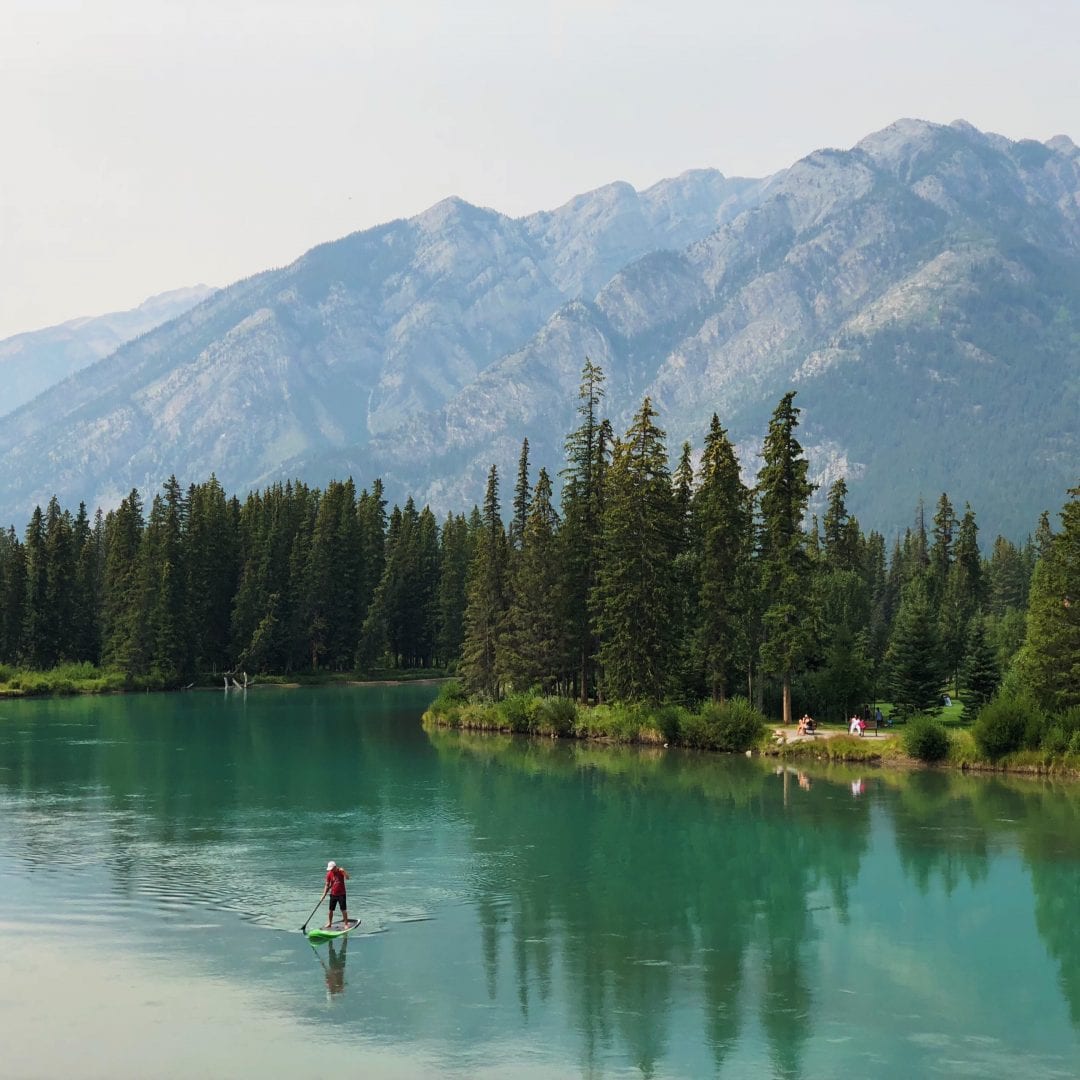
Cave and Basin
Located in the actual town of Banff the cave and basin national historic site of Canada is home to a thermal mineral spring around which Banff National Park was originally established. The Cave and Basin is a beautiful section that is open to the public and is covered by a large building designed to celebrate Canada’s rich natural history and the establishment of its parks system.
There are many park ranger activities and productions put on at this particular site you should definitely look into! The basin was originally discovered by James Hector, (the man who named Castle Mountain) and he was followed by a man named Joe Healey in 1874. But it was actually two Canadian Pacific railway workers who descended through a small skylight entrance to find the thermal springs and constructed a little cabin nearby specifically to capitalize on tourism and bringing people to them.
Nowadays it is much easier to get into the springs through the state of the art facilities and artificial tunnel. Not only does this area have a replica of the original 1887 bath house but it has also restored a swimming pool that was built in 1916 as part of the deal structure and posts many hiking trails and snowshoe trails for visitors.
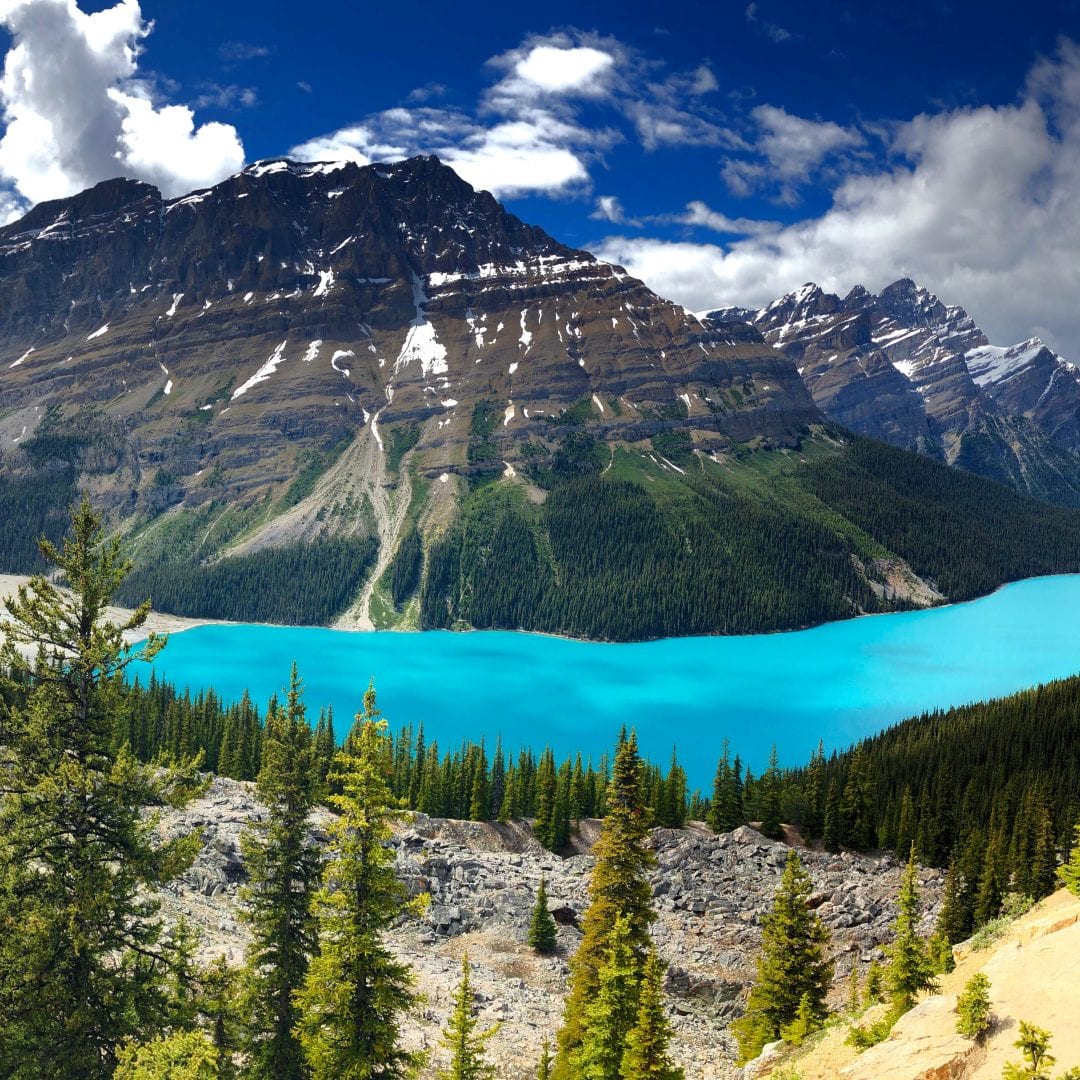
Winter Adventures
Believe it or not, you don’t have to wait for summer to appear to visit the park. Winter tourism has long been part of the areas charm including an “ice palace” that was built by World War I internees in 1917. They also launched several bids to host the Winter Olympics here from 1964 to 1988.
Nowadays it is extremely popular as a ski destination as well as snowshoeing, curling and skijoring, a Norwegian winter sport that involves a person on skis being dragged by a horse or team of dogs. Just be sure to pack for the temperatures as an average winter day in the park tends to be 23°F at the warmest and drops down to near zero at night.
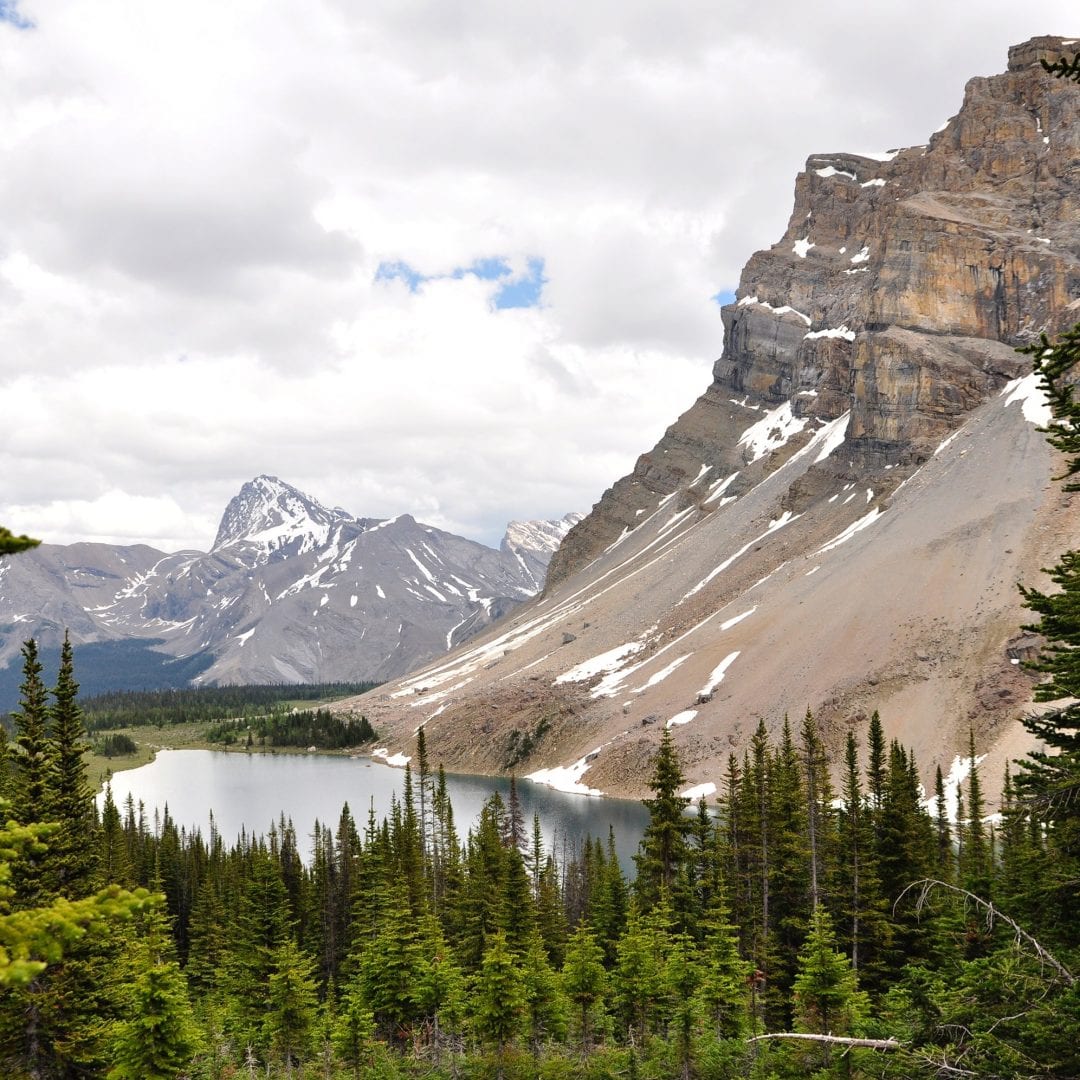
Canada is known for having many places of natural beauty, but there are very few spots in the country that can boast the pristine landscape and rich history of Banff National Park. It is a reminder to Canadians of all that it is to be Canadian; with beautiful slopes to view in both spring and summertime and then ski and snowshoe in the winter. It is a place of peace while at the same time offering plenty of bustle and activity for those looking to answer the call of the adventure that is the Canadian Rockies. A call they have been whispering in our ears for the last 400 years.
Just be sure to bring a parka or two because chances are… it’s going to get chilly.
